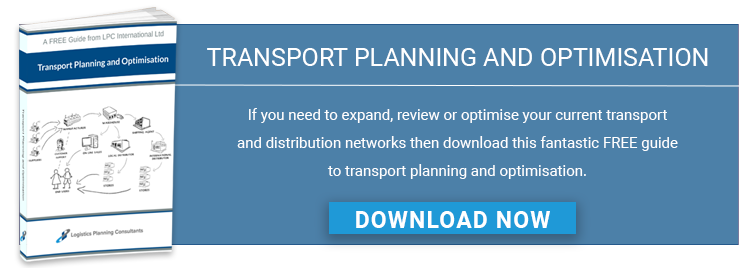
The remit was to review the commercial transport (courier) services currently undertaken or commissioned by NHS organisations within the Sussex & East Surrey Sustainability & Transformation Partnership and make recommendations for improvements in service delivery and cost and environmental performance (CO2 savings).
Background
Commercial transport or couriers refers to the van fleets used to visit surgeries, clinics and other medial entities to collect pathology samples, pharmaceuticals and mail as well as deliver mail and equipment. The fleets run multiple trips per driver shift returning to base frequently to unload pathology samples and reload with whatever is necessary.
Sussex NHS comprises six different trusts that at the time operated their fleets independently with Little evidence of synergy.
Methodology
A base case model of the commercial transport operations was built in our transport and distribution modelling suite to accurately replicate all van routes including all parameter and restrictions.
Each trust’s transport teams were also interviewed to learn about service levels, restrictions, limitations, etc.
Findings
The Base Case model revealed amongst other issues:
- Serious territorial overlap – each trust’s fleet was crossing over deep into adjacent trusts’ territories.
- Cases of vehicles from different trusts visiting the same area (even the same building) each serving only staff from its own trust.
- Very high service levels set by Pathology requiring multiple returns to base per shift and two or more collections per day per surgery.
- Timing discordance leading to one vehicle collecting or delivering one thing and another arriving later to collect or deliver something else.
- Dedicated pharmaceutical routes.
Two sets of solution were put forth:
- More ambitious and longer term
- Quick win tactical implementations
Longer Term Solutions
The Cost of Pathology: This element of the study quantified the additional cost incurred by Pathology’s strict requirements. The number and content Pathology routes were retained but the visit frequency for each customer set to one and the route limited to only one trip. This is extreme and there are many reasons why such an arrangement would never be pursued in its entirety, but the point of the exercise was to quantify the additional cost of existing service levels and generate a desire to work towards a compromise for cost and environmental reasons.
The result quantified the excess mileage generated by having to visit each customer multiple times per day and having frequent returns to base per shift. In Sussex NHS’s case the saving could be:
- Miles and CO2: 28%
- Hours 22%
Furthermore, if some compromise were to be reached with suggestions tabled such as refrigeration to extend the shelf life of some samples, routes could be re-planned to lose one or more vehicles.
The Best Case Scenario
This was an ambitious scenario to determine the cost of all the existing territorial overlapping, lack of synergy and high Pathology and Pharmacy service levels. The network was redesigned so that each address was served only by its nearest base and had only one vehicle visit per day. The van courier service would be complemented by a (partially existent) inter-site shuttle service to move inbound mail to the corresponding postal hub or outbound base, samples to the nearest labs, etc. There would be cross-trust billing of services such as Pathology analysis, Pharmacy dispensary services or SSD services. The maximum savings for the van courier element of the operation could be:
- Cost: 48%
- Vehicles: 46%
- Miles and CO2: 66%
- Mile per stop: 55%
- Cost per stop: 68%
Whilst there are barriers that would prevent the full implementation of the above scenario, there are considerable savings to be had from restructuring the network to achieve synergies between the trusts’ fleets.
Quick win tactical implementations
Existing routes were analysed in detail to identify opportunities to:
- Absorb a route into surrounding and overlapping routes.
- Transferring specific stops from one route to another more suitable one to remove an unnecessary distant leg or multiple van visits to a single address.
- Dissolving Pharmacy routes which are dedicated for security reasons into conventional routes by equipping the conventional route vans with safe boxes to carry Pharmacy in.
- Absorbing dedicated SSD routes into conventional routes.
The quick win tactical opportunities identified amount to the following savings:
- Cost: 19.5%
- Mileage and CO2: 19.9%


